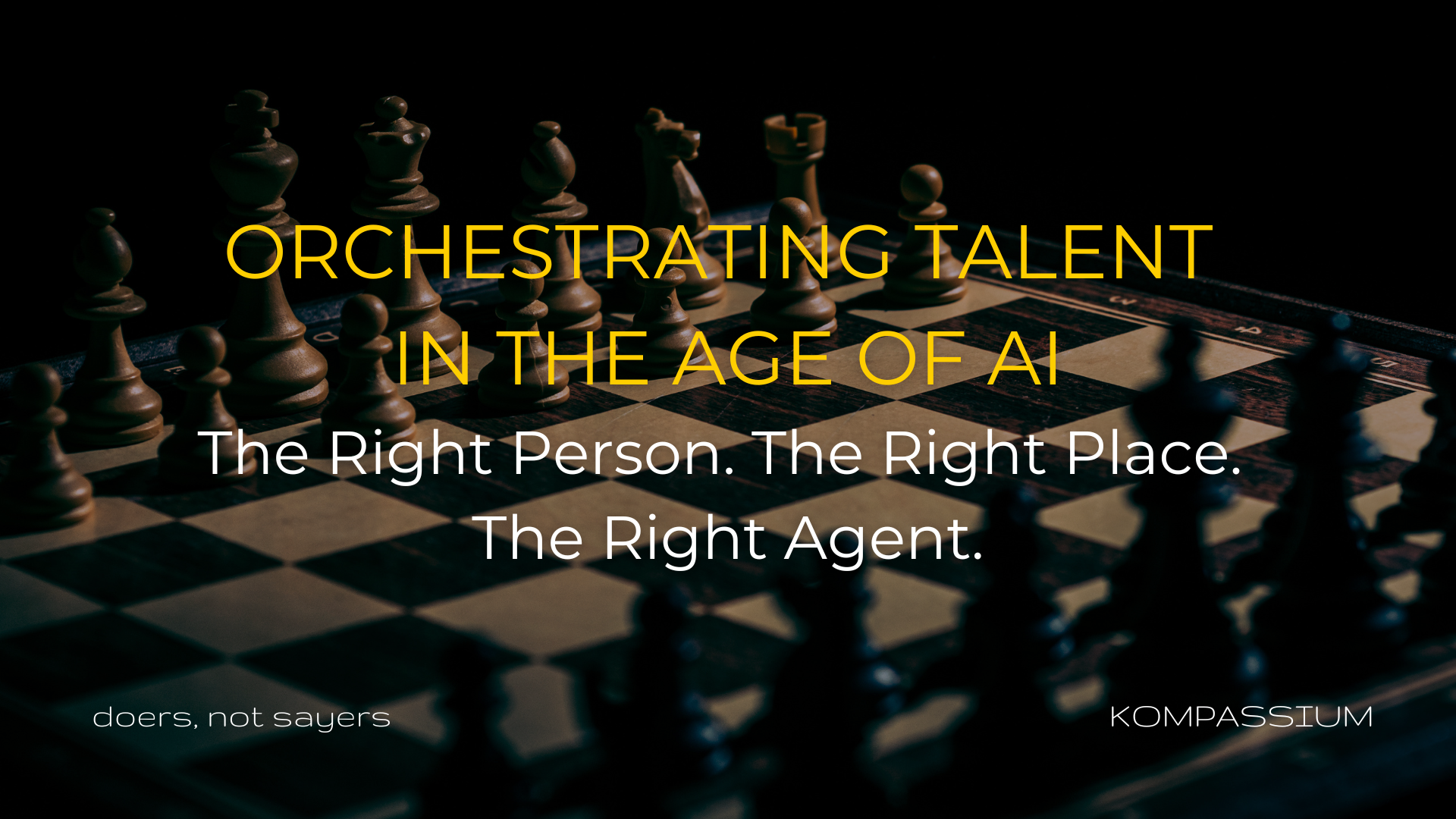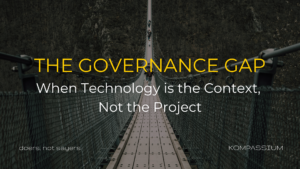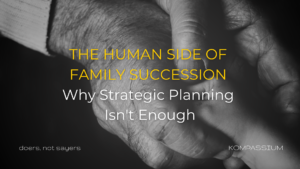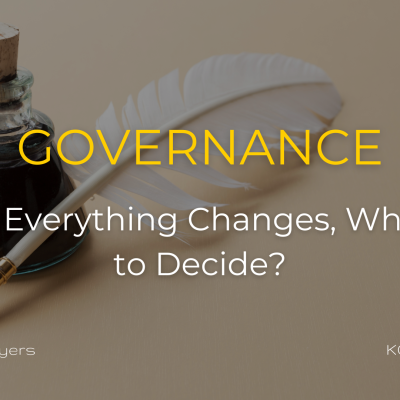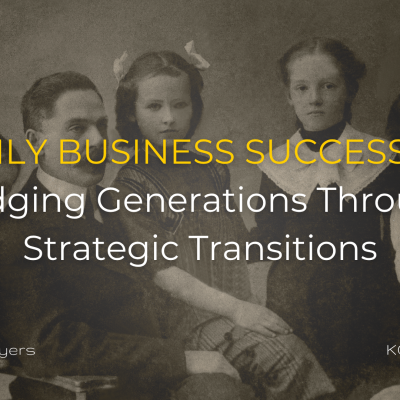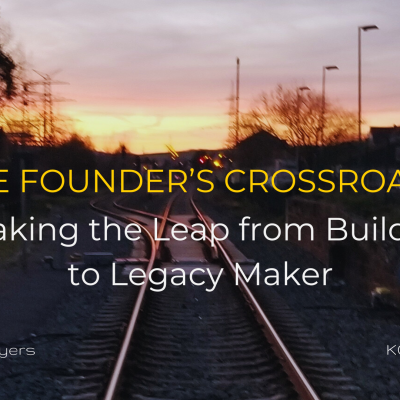The Right Person. The Right Place. The Right Agent.
By Juan Pable de Hoyos, Marcos Leal, and Stefanie Furrer, KOMPASSIUM Partners
Most organizations believe they face a talent gap. However, in reality, many are dealing with a skills gap:
What skills are required today and in the future?
Who (or what) can perform those?
And now, they’re about to face an augmentation challenge with the rapid adoption of artificial intelligence (AI) technologies and, more recently, the growing interest in agentic AI.
Organizations have hired capable people—ambitious, skilled, and ready to grow. As our article on “Great Talent is not Enough” elaborated, high performers in the wrong context underdeliver, become disengaged, or leave. Worse, they may disrupt team cohesion or slow down innovation if cultural or structural misalignment exists.
Talent is not just about hiring. It’s about orchestration—placing the right people in the right roles at the right time. But today, we stand at an inflection point where even this understanding needs to evolve.
After decades of technological advancement reshaping business operations, we’re witnessing the most profound shift yet: the rise of AI agents that can think, reason, and execute alongside human talent.
Many companies have begun leveraging AI tools, such as chatbots and virtual assistants, to enhance customer service and streamline operations. The question for forward-thinking leaders is no longer “Do we have the right people in the right roles?” but
“How do we orchestrate the symphony of human talent and technological capabilities to create unprecedented value and not be left behind by competitors?”
Over the past few years, the rise of accessible tools such as AI-powered assistants built on Large Language Models (LLMs) – including ChatGPT, Copilot, Gemini, and others – has enabled all kinds of people and professionals to interact meaningfully with AI agents. This has accelerated mainstream adoption, prompting organizations to redefine roles, decision-making processes, and the very concept of expertise.
The Evolution of Business Leadership and Talent Orchestration
To understand our current moment, we must appreciate how technology has continuously reshaped how leaders approach talent, organizational design, and value creation.
From Command to Connection (1980s-1990s)
Before the widespread adoption of computing, business leadership largely followed industrial-era processes, standardization, and command-and-control models. Leaders were expected to be decisive authorities who placed people in clearly defined roles with specific responsibilities. Talent management focused primarily on finding people who would fit into existing structures rather than reshaping the organization to align with individual strengths.
The introduction of enterprise software in the 1980s and 1990s, such as ERP and HRIS systems, like SAP R/2 or Oracle HR, began transforming these dynamics. As information became more democratized and quickly available within organizations, leadership shifted from control to enablement. Leaders could suddenly see talent patterns and deployment options more clearly through digitized HR systems and performance data.
This era saw early recognition that talent placement wasn’t just about filling boxes on an organizational chart, but about creating the right environment for people to excel.
Progressive leaders in some organizations began experimenting with more flexible organizational designs that allowed talent to flow to where it could create the most value rather than being confined to rigid hierarchical positions.
The Network Revolution (2000s-2010s)
The emergence of SaaS and early cloud computing fundamentally changed how organizations structured themselves and deployed talent. Platforms like Salesforce, Workday, Slack, or early versions of Microsoft Teams enabled organizations to break free from traditional hierarchies and start operating with distributed, agile teams. As technology started making remote collaboration easier, talent could be engaged regardless of geography. That was a pinnacle in the fast-evolving globalization. Leadership models evolved from hub-and-spoke to networked approaches, with talent flowing more fluidly across organizational boundaries.
This period saw the rise of concepts like “tours of duty” (Reid Hoffman) and “talent marketplaces” within organizations. Leaders increasingly recognized that sustainable advantage came not from static talent deployment but from continuously realigning capabilities with evolving needs. In recent years, formal “talent-sharing” initiatives have emerged, where companies pool their resources to utilize experts on short-term projects.
Putting the right people in the right roles was no longer a one-time exercise but a continuous adaptation process. The most successful leaders became talent orchestrators, creating systems where skills and challenges could naturally align rather than through top-down assignments. Benchmark talent development companies, such as GE, focused on building such networks, encouraging people to manage beyond the organizational charts, and hiring creative and clear thinkers who could help large organizations transition from the 80s and 90s mindset to a new one that was emerging.
The Cloud and Early ML Transformation (2010s-2020)
The maturation of cloud computing and the emergence of practical machine learning created new possibilities for talent deployment and development. The introduction of people analytics platforms has enabled organizations to make data-informed decisions about talent placement. This process has been greatly accelerated by the integration of advanced machine learning algorithms. Through increasingly sophisticated analytics, organizations gained unprecedented visibility into skill distributions, performance patterns, and collaboration networks.
Market Intelligence companies offering machine learning possibilities were seeing suspiciously and hardly comparable to phone call research and face-to-face interviews.
On the people management side, leaders began to gain access to more data-informed decisions about talent placement, identifying hidden capabilities and untapped potential that might have remained invisible in previous eras. The rise of people analytics enabled more sophisticated approaches to matching people with contexts where they could thrive. Cloud platforms like AWS, Azure, and Google Cloud—combined with the mainstreaming of machine learning through tools like TensorFlow and Azure ML—enabled a dramatic shift from reactive HR practices to predictive people analytics
In recent years, platforms like Eightfold.ai, Gloat, and the widely adopted Workday have integrated talent intelligence systems that use AI to infer skills, map career paths, and identify internal mobility opportunities—fundamentally reshaping how companies structure work and support employee development.
At the same time, these technologies began changing the nature of roles themselves. Some tasks could be automated or augmented, allowing human talent to focus on higher-value activities.
The question was no longer “Who should be in this role?” but “How should this role be designed to maximize human potential?”
Throughout this period, the most successful leaders were those who understood how to integrate these capabilities into coherent talent strategies. In organizational charts, IT was still a secondary group in most organizations, where business development partners began to grow in importance, breaking down barriers from past “Helpdesk or IT infrastructure mindsets” to become the new “Tech Enablers Partners.” They recognized that there were numerous opportunities to enhance individual capabilities, creating environments where people could perform at their best with the right technological support.
The Entrepreneurial AI Revolution (2020s)
Today, we face a more profound shift than any previous technological wave. The emergence of vertical AI agents—domain-specific AI systems with deep expertise in particular fields—and agentic AI that can autonomously plan and execute complex tasks fundamentally changes the talent equation.
This isn’t simply about automating routine work or providing better data for human decision-makers. It’s about creating genuine partnerships between humans and artificial intelligence, each bringing distinct and complementary capabilities to value creation. Tech is no longer on the other side of the office; it needs to be embedded in everyone’s thinking and ways of working. Organizations that effectively leverage AI tools, such as Robotic Process Automation (RPA), are experiencing significant increases in productivity and efficiency.
As one executive in our network recently observed,
We used to ask, “Who’s the right person for this role?” Now we ask, “What’s the right capability required? Is it a human talent or an AI-based solution that can be applied to this challenge?”
For leaders, this transforms both talent strategy and organizational design. The question isn’t simply how to place existing talent but how to create entirely new configurations of human and AI capabilities that were previously impossible. This requires a fundamental rethinking of what constitutes a “role” and how work should be structured.
In the same way that process automation created new businesses, the internet created a new economy. With vertical AI, more market entrepreneurs and opportunities will emerge, benefiting many people. All ecosystems will need to adapt.
This isn’t just about efficiency gains or cost savings. It’s about reimagining what’s possible when we combine human talent’s unique strengths with AI systems’ emerging capabilities.
The New Talent Equation: Human + AI
This evolution fundamentally changes how leaders think about talent orchestration, organizational design, and value creation. The question isn’t simply how to match people to existing roles but how to create new synergies between human capabilities and AI systems. The first waves of generative AI enabled many more people to achieve a basic level of execution for certain tasks. The next wave will significantly change the capabilities required to perform the vast majority of organizational functions.
As AI systems mature from simple automation to cognitive and agentic capabilities, they are not just changing what work gets done but how we develop, grow, and lead people, through personalizing leadership development programs, uncovering hidden talents and matching individuals to growth opportunities and freeing up human capacity, allowing individuals to focus on high-value, strategic, and creative work by offloading repetitive, low-value tasks to AI agents.
From Replacement to Reimagination
Early discussions about AI and talent often focused on automation and displacement, identifying which roles companies would soon eliminate due to the advanced capabilities of AI. This zero-sum framing misses the transformative potential of human-AI collaboration.
The most successful leaders we work with see AI not as a replacement for human talent but as a fundamentally new capability that organizations need to orchestrate alongside people. They’re asking: “How do we combine human and AI capabilities in ways that allow us to tackle problems we couldn’t address before?
This requires understanding the unique and complementary strengths that humans and AI systems bring to organizational challenges:
Human Strengths:
- Creative problem-solving and innovation
- Emotional intelligence and relationship building
- Ethical judgment and value-based decision making
- Adaptability to novel situations
- Cultural understanding and contextual awareness
AI Strengths:
- Processing vast amounts of information
- Identifying patterns and correlations in data
- Executing routine tasks with precision
- Working continuously without fatigue
- Scaling knowledge and capabilities
The organizations gaining a competitive advantage aren’t simply replacing humans with AI or using AI to improve human productivity marginally. They’re fundamentally redesigning how work happens to leverage the best of both, creating new possibilities that neither humans nor AI could achieve on their own.
As an example, a large company is currently driving a major AI transformation across its systems architecture, processes, and operations. The goal is clear: to remove unnecessary workload from their people so they can do their best, most meaningful work. They believe AI should not replace human potential—it should amplify it.
By embedding AI into product development, operations, and internal systems, they are actively reducing friction across the organization, freeing up teams to innovate, collaborate, and lead with agility. They are also embedding it into their culture and leadership model. As they expand across Latin America, they are leveraging AI to ensure their people are not overwhelmed by scale but empowered by intelligence.
The New Leadership Capabilities
This emerging human-AI partnership requires leaders to develop new capabilities that differ significantly from traditional management skills.
Leadership Capabilities
Strategic AI Vision: Successful leaders don’t need deep technical expertise, but they must clearly understand how AI can transform their organization’s approach to talent and value creation. This means recognizing what tasks can be automated and what new organizational possibilities become feasible when AI handles certain cognitive functions. Organizations like Amazon have completely redefined their supply chain management using AI to enhance efficiency.
Capability Orchestration: Rather than thinking solely about human resources, leaders must learn to orchestrate hybrid capabilities, understanding what challenges humans address better than machines, what should be delegated to AI, and how to create compelling interfaces between them. This requires a fundamentally different approach to organizational design and role definition. For instance, companies that leverage AI in employee onboarding are creating compelling interfaces between AI-generated content and human HR teams, thereby accelerating the onboarding process, enhancing personalization, and improving the overall employee experience.
Ethical Framework Development: As AI agents make more consequential decisions, leaders must establish clear ethical frameworks to guide these systems. This isn’t just about avoiding harm—it’s about ensuring AI systems reflect the values and principles the organization stands for.
Continuous Learning Leadership: With AI capabilities evolving rapidly, leaders must model and foster a culture of continuous learning. This means experimenting with new approaches, cleverly and holistically adopting what matters, admitting when established methods no longer serve, and rapidly integrating new capabilities. This reflects an emerging trend where organizations prioritize upskilling and reskilling their teams to adapt seamlessly to changing technological landscapes
Organizational Capabilities
AI-Native Business Architecture: Successful enterprises will design their operations from the ground up to leverage AI capabilities. This means rethinking traditional divisions of labor, decision rights, and process flows to create models where humans and AI systems complement each other.
Adaptive Knowledge Systems: Organizations must build systems that continuously capture and operationalize knowledge, feeding human insights into AI systems while ensuring human team members benefit from AI-generated learning.
Experimental Governance: Traditional governance approaches often emphasize stability and risk mitigation. AI-augmented businesses need governance models that enable rapid experimentation while maintaining appropriate safeguards.
Ecosystem Integration: No organization can build all AI capabilities internally. Successful businesses will develop the ability to identify, integrate, and orchestrate capabilities from an evolving ecosystem of AI providers and partners.
The Entrepreneurial Opportunity Landscape
This transformation represents the most incredible opportunity landscape for business builders and family enterprises since the internet revolution, but navigating it requires both vision and pragmatism.
Democratized Entrepreneurship
The most exciting aspect of vertical AI agents is how they democratize capabilities that were previously available only to large, well-resourced organizations. This creates openings for new types of entrepreneurs:
Domain Experts as Founders: Professionals with deep industry expertise but without technical backgrounds can now build AI-augmented businesses by partnering with the right technical resources. The value of domain knowledge increases as it becomes more readily operationalized through AI.
Micro-Multinationals: Small teams can build global businesses by leveraging AI agents to handle localization, around-the-clock operations, and market-specific adaptations that would have previously required local offices and teams.
Efficiency Entrepreneurs: In established industries where incumbents are slow to adapt, entrepreneurs can build businesses that deliver dramatically better efficiency through AI augmentation, competing successfully on both quality and cost.
Family Business Reinvention
Family enterprises face both unique challenges and opportunities in this transition. Many have built their success on deep domain expertise passed down through generations. This knowledge remains incredibly valuable, but must now, more than ever before, integrate new technologies.
One approach we will see more often is the creation of dedicated “future business units” within family companies—small, entrepreneurial teams charged with reimagining the business model through an AI-augmented lens. These teams often bring together next-generation family members with outside talent to explore new possibilities while respecting the company’s core identity.
The Integration Challenge
For many entrepreneurs and family businesses, the challenge isn’t recognizing the opportunity but developing the capabilities to pursue it. Building or integrating AI systems requires technical expertise that many organizations lack. It can also challenge the basis on which family businesses were created in the past, the profound knowledge of niche industry segments, and the historical processes required to meet their evolving needs.
This creates an ecosystem of enablers—AI integration partners, vertical AI platforms tailored to specific industries, and consultancies bridging the gap between business vision and AI implementation.
Successful entrepreneurs in this landscape must take a pragmatic approach:
- Start with clear business objectives rather than technology-driven initiatives.
- Focus on rapid learning through small-scale experiments before significant commitments.
- Build partnerships that provide access to specialized technical expertise.
- Establish measurable feedback loops to assess the impact and inform future development.
Navigating the Journey: The KOMPASSIUM Approach
At KOMPASSIUM, we guide leaders through this transformative journey with a distinct approach that combines deep domain expertise with hands-on implementation support.
As experienced executives who have built and transformed businesses across various industries, we understand both the strategic implications of AI and the practical implementation challenges associated with new technologies.
We believe successful talent and new technology integration require both visionary thinking and practical execution:
- Strategic Opportunity Mapping: We help you identify where the integration of human and AI capabilities can create the most significant value for your business, examining operational efficiencies and exploring deeper strategic opportunities.
- Wisdom-Guided Experimentation: Rather than theorizing endlessly or betting everything on grand transformation programs, we advocate for targeted, measurable experiments that demonstrate value quickly while building organizational confidence and capability. “Think big, start small, go fast” was once said.
- Practical Capability Building: We work alongside your teams to develop the technical infrastructure and human capabilities needed for sustainable technological integration, focusing on practical skills that create immediate impact.
- Elevated Execution: As hands-on experienced executives, we remain engaged throughout implementation, ensuring that plans translate into real-world results and measurable business outcomes.
Final Thought: The New Orchestration Challenge
The rise of vertical AI agents doesn’t mean the end of human talent—it means the beginning of a new, more complex orchestration challenge. Leaders must now compose symphonies that incorporate both human creativity and AI capabilities, creating harmonies that would be impossible to achieve with either alone.
The future of talent isn’t about displacement; it’s about elevation. It’s about designing new ecosystems where humans and machines grow together, learn from one another, and drive a higher standard of business and humanity.
Our visionary leaders understand that this isn’t about replacing people with machines but about creating new possibilities through their partnership. They’re asking, “Do we have the right people in the right roles?” but “Are we creating the right combinations of human talent and AI capability to tackle previously unsolvable problems?”
That’s the new orchestration challenge, and it will define competitive advantage in the decades to come.
Marcos Leal, Juan Pablo de Hoyos, and Stefanie Furrer are senior partners at KOMPASSIUM, a global network of experienced leaders committed to business transformation and sustainable growth. Based in Frankfurt, Germany, KOMPASSIUM bridges the gap between elite expertise and straightforward strategic execution, helping organizations navigate complexity, seize opportunities, and drive innovation.
